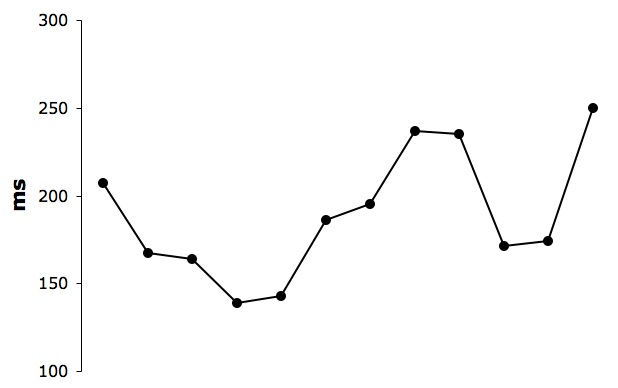Expressive Timing on:
[Wikipedia]
[Google]
[Amazon]
Expressive timing refers to the musical phenomenon whereby a performer introduces subtle temporal nuances to an otherwise metronomic ("perfectly" timed) interpretation. This is also referred to as ''microtiming'' or ''microrhythm''. For instance, a pianist might introduce a slight ritardando (not called for explicitly in the musical score) at the end of a phrase to convey a structural event (in this case, a phrase ending). Expressive timing has been shown to operate in different musical styles. In 
jazz
Jazz is a music genre that originated in the African-American communities of New Orleans, Louisiana, in the late 19th and early 20th centuries. Its roots are in blues, ragtime, European harmony, African rhythmic rituals, spirituals, h ...
, expressive timing plays an important role in how " swing" notes are timed.
It has also been shown empirically that simple rhythms are often performed differently from how they are notated. This aspect of rhythm production is at odds with a feature of rhythm perception—namely, that rhythms made up of complex ratios are simplified by listeners to consist of simple ratios. For example, when presented with a sequence of sounds whose interonset interval
In music a time point or ''timepoint'' ( point in time) is "an instant, analogous to a geometrical point in space". Because it has no duration, it literally cannot be heard, but it may be used to represent "the point of initiation of a single pit ...
s (IOIs) are 700 – 300 – 400 milliseconds (ratios of 7:3:4), a listener might code the rhythm according to the simpler ratios 2:1:1. This is known as quantizing.
The following figure graphs timing data for a short phrase performed by John Coltrane
John William Coltrane (September 23, 1926 – July 17, 1967) was an American jazz saxophonist, bandleader and composer. He is among the most influential and acclaimed figures in the Jazz#Post-war jazz, history of jazz and 20th-century musi ...
("Like Someone in Love
"Like Someone in Love" is a popular song composed in 1944 by Jimmy Van Heusen, with lyrics by Johnny Burke. It was written (along with "Sleigh Ride in July") for the 1944 film, '' Belle of the Yukon'', where it was sung by Dinah Shore. It was a h ...
" 2:42–2:45.) The Y-axis plots interonset intervals. Even though the notes are nominally sextuplet
In music, a tuplet (also irrational rhythm or groupings, artificial division or groupings, abnormal divisions, irregular rhythm, gruppetto, extra-metric groupings, or, rarely, contrametric rhythm) is "any rhythm that involves dividing the beat ...
s, notice how their actual durations fluctuate above and below the sextuplet's metronomic value of 162 ms.

References
{{DEFAULTSORT:Expressive Timing Articulations (music)